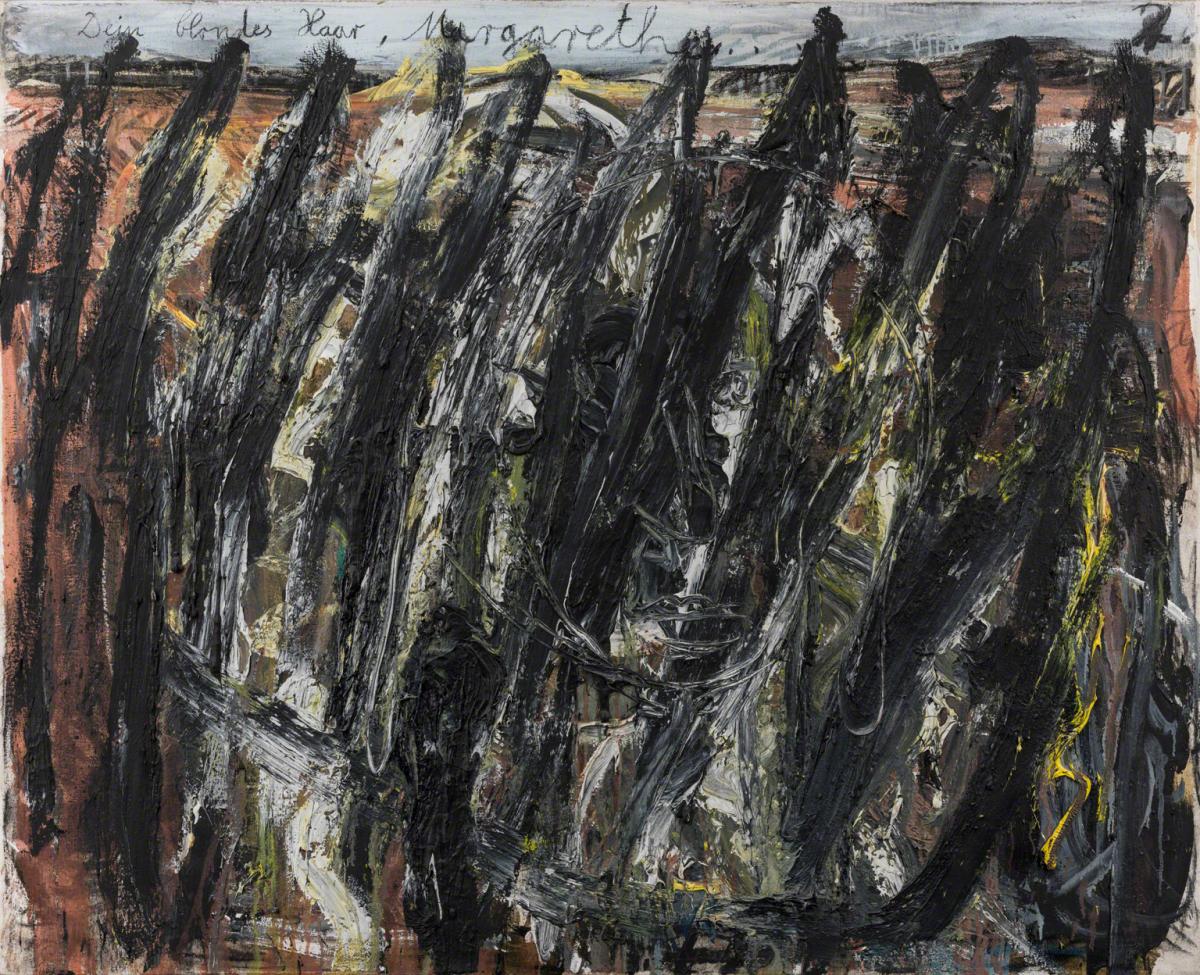Dein blondes Haar, Margarethe
Anselm Kiefer ( 1981 )

How can one be a German artist after Nazism and the destruction of “kultur”? This is the question Anselm Kiefer asked himself, echoing the famous lines in Theodor Adorno’s Negative Dialectics of 1955: “Auschwitz demonstrated irrefutably that culture has failed…. All post-Auschwitz culture … is garbage.”[1] How have we managed “following” Auschwitz? And yet … Kiefer painted and continues to paint; others write, make movies, act, dance. Might kultur then be redeemed?
In 1981, Kiefer encountered the poetry of Paul Celan, the Austrian and Jewish poet who devoted his life and poetry to preserving the memory of the Shoah through works such as Sand from the Urns and Poppy and Memory, but above all through the inaugural text entitled “Death Fugue,” written in Bucharest in May 1945, three months after the liberation of Auschwitz by the Red Army. This poem, which ends with the lines “Your golden hair Margarete / Your ashen hair Shulamith,” would reorient the entirety of Kiefer’s work and give rise to many paintings that function as “transformation groups,” to use Claude Lévi-Strauss’s concept, around the figure of Margarete. More than any other German artist, Kiefer would borrow many themes from Jewish tradition, showing the extent to which Jewish thought is inscribed in the very heart of German thought and its memory: it is about asserting that German Jews were an intrinsic component of German identity, before their extermination by the Nazis. Hence, the deep reading into Jewish mystics, Hassidism, and the Kabbalah: Jewish mythology is the only one that can save German kultur, which lies in a state of advanced decomposition, as relayed by Gershom Scholem and Isaac Louria. It would be the antidote to the ban put forth by Adorno. And so, Kiefer regularly compares Margareta and Shulamith: Margareta, a mythological figure in the German collective memory, embodies the Faustian blond wife, the perfect incarnation of the Aryan woman, while Shulamith is the Jewess from the Song of Songs. By comparing Margareta and Shulamith, Kiefer contributes to de-Nazifying the myths—such as those of Siegfried or Brunhilde—that were appropriated by National Socialism.
The paintings devoted to Margarete call for a new material, decisive in Kiefer’s painting—straw, symbolizing the blondness of her hair—which he attaches directly to the canvas. About thirty works—paintings, watercolors, painted photographs—feature the figure of Margarete and her blond hair, including Dein blondes Haar, Margarethe. Here, the horizon line is situated as high and as far away as possible on the canvas: a gray, ashen sky, on which we see, in Kiefer’s fine, careful, recognizable script, writing that acts as a “signature.” The earth of German soil, das Land, is violently hatched with thick, black lines, like a geographical erasure, while a few wisps of straw connote Margarete’s hair but struggle to brighten or illuminate the painting’s darkness. It is as if a soldier, through the fractured lines and pictorial impasto, were defying German soil. And here the careful eye will note—an optical illusion? over-interpretation?—behind the enraged hatchings, the barely sketched outline of a face: the contour of the oval, eyes, mouth, nose perhaps, like a phantom, a dead/living apparition at the heart of the painting and the land. Could this be Margarete’s “other” that we glimpse? Shulamith, Margarete’s double and opposite; Shulamith the Jewess; Shulamith, not with golden hair but with ashen hair….
1 Theodor W. Adorno, Negative Dialectics, trans. E. B. Ashton (London: Continuum, 2007), 366–67.
Text by Dominique Baqué, translated by Jeanine Herman, adapted from Seeing Differently: The Phillips Collects for a New Century (The Phillips Collection in association with Giles, 2021)